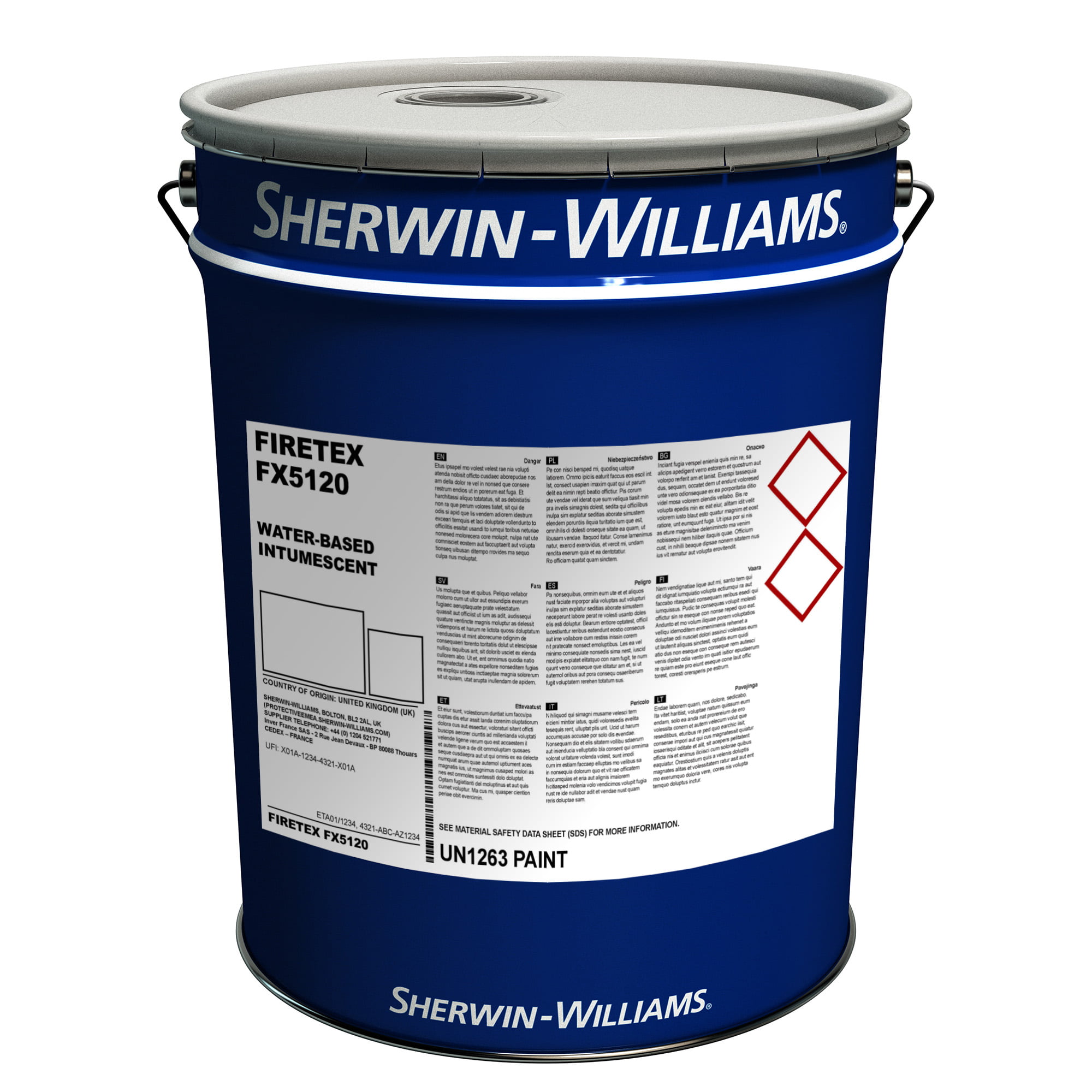Waterborne intumescent coating designed for internal structural steelwork.
Provides up to 2 hours resistance.
Tested in accordance with UL 263 (ASTM E-119) and CAN/ULC-S101.
Highly competitive loadings.
Easy application properties.
Impact Resistant.
Low odour, low VOC.
Guidance Notes:
The thickness of an intumescent coating is dependent on the steel section used. For calculation of DFT (dry film thickness) a factor called HP/A (heated perimeter divided by cross sectional area) is used.
Intumescent coatings are applied as an intermediate coat in a coating system (primer, intermediate and top/finish coat if required).
NB: HP/A is generally used with British testing and A/V in European testing, however, the principles are the same and both are accepted methods of calculating the steel section factor.
The rate increase in temperature of a steel cross-section is determined by the ratio of the heated surface area (A) to the Volume (V). This ratio A/V, has units of m-1 and is known as the “Section Factor”.
Steel members with low Section Factors will heat up more slowly. A steel section with a large surface area (A) will receive more heat than one with a smaller surface area. Also, the greater the volume (V) of the section, the greater the heat sink. Therefore, a small thick section will be slower to increase in temperature than a large thin one.
The Section Factor (A/V or HP/A) is thus a measure of the rate at which a section will heat up in a fire. The higher the value of the Section Factor the greater the protection thickness required.
Steel Preparation & Primers:
A primer is used as a preparatory coating put on the steel before applying the intumescent paint and acts to provide corrosion protection. Priming ensures better adhesion of the intumecent paint to the surface, increases its durability, and provides additional protection for the material being painted and is always recommended.
A primer designed for steel is still highly recommended if a part is to be exposed to moisture. Once water seeps through to the bare metal, oxidation will begin (plain steel will simply rust). Metal primers might contain additional materials to protect against corrosion, such as sacrificial zinc.
Metal hydroxides/oxides do not provide a solid surface for the paint to adhere to and paint will come off in large flakes. Using a primer will provide extra insurance against such a scenario. An additional reason for using a primer on the steel could be the poor condition of the surface. A steel part can be rusty, for example and should be prepared to the Swedish Standard 2.5 in accordance with BS7079 Part A1.
FX5120 must be applied to clean, dry and primed steels. Extensive primer compatibility tests have been undertaken on single and two pack products commercially available. Bituminous and chlorinated rubber primers are unsuitable because of their poor performance in fire conditions. Zinc rich primers require a tie coat before application of FX5120. If you are ever unsure of the primer and its compatibility then please send us the details of the primer and we will confirm compatibility. Must not be applied directly to galvanised steel and zinc rich primers.
See attached data sheet for recommended primers.
Recommended Topcoats:
If it can be guaranteed that application and subsequent in-service conditions will be in a C1 environment as defined in ISO 12944-2:1998, then no topcoat is required.
Envirogard M770 is the reccomended topcoat and should be used for any subsequent re-decoration.
Firetex M71V2, Resistex C137V2 or Resistex C237 may be used in place of Envirogard M770 if circumstances require it. Either coating should be applied within 7 days for best performance.
IMPORTANT INFORMATION ON PURCHASING OF PASSIVE FIRE PROTECTION PRODUCTS NOTICE:
The information displayed about the products on this website is to be used for guidance ONLY, we advise that all customer contact our technical department to obtain a free no obligation specification and quotation before purchasing goods directly from the website.
Products purchased directly from our website without specification will NOT qualify for certification.
Please be aware that any negligence caused by failure to obtain the relevant advice, or availment of our specification and estimation service, will absolve International Passive Fire Ltd from any liability should Passive Fire Protection Products prepared, or used, by the purchaser, or any other parties, result in damage to property or human life, or for any monetary costs incurred due to incorrect usage.



